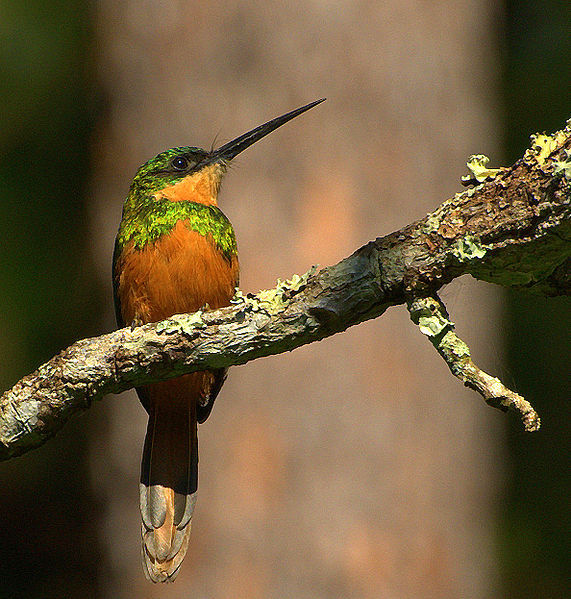
Today’s blog is an opportunity to improve your bird identification skills and it’s a challenge.
What bird is this?
To level the playing field, I’ve picked a bird I’ve never seen.
Let’s go through the normal identification clues in order of importance. These are the questions I ask myself when birding. Many of them will help here. (Yes, the order of the clues really matters.)
- Where on earth is this bird? Out-of-place birds are rare. Narrow the possibilities by knowing which birds occur where you’re birding.
- What habitat is the bird in? Even on migration birds pick their preferred habitat if at all available. Is the bird at the ocean? a lake? river? streamside? dense woods? open woods? pines? oaks? a field? a swamp? a mudflat?
- What sound does it make? If you can identify birds by song, this is useful in Spring through June. (If you can identify call notes you’re such an expert that you know what bird this is.)
- What size is it? The size of a goose? Larger? The size of a crow? robin? sparrow? Smaller than a sparrow?
- What shape is it? This is really important! Check its beak: long? short? thick? thin? big and fat? thin and short? Check its legs: long? short? almost non-existent? Check its neck: long? short? very short? Check its tail: long? short? fancy? Does it have ear tufts? Does it have a crest?
- What is it doing? How does it perch? (Does it perch at all?) How does it fly? (short bursts, darting, hovering, soaring) What does it eat? Food is a major clue.
- What color is it? Color is actually the last clue though our brains lock onto it first. You can actually identify a bird in the field without knowing its color. How many of you can identify a crow by hearing it caw? …and you don’t even need to see it!
.
Here are the clues applied to the bird in this picture. In some cases I’ll tell you more than you could know from a random photo.
- Where on earth is this bird? It was photographed in Brazil.
- What habitat is the bird in? It’s perched on a branch without lots of leaves. Wild guess: This bird is in open woods.
- What sound does it make? We can’t tell in a photo.
- What size is it? We can barely tell in a photo so I’ll have to say: This bird is the size of a starling.
- What shape is it? Great question!
- Look at that beak: long and thick and significantly large compared to its body length.
- Notice the whiskers. Most birds with whiskers catch insects in flight — nighthawks and flycatchers, for instance. If this bird resembles another whiskered bird, it could be a relative?
- Check its legs: short.
- Check its neck: short.
- Check its tail: long! about 1/3 of the bird’s length
- What is it doing?
- How does it perch? It typically perches with its beak tilted up. Its stance is like a hummingbird except that its beak and body are too large.
- How does it fly? We can’t tell in this photo.
- What does it eat? Whiskers indicate that it probably eats flying insects.
- What color is it? Rufous and iridescent green.
So…
This bird has a beak like a woodpecker (a distant relative) but its whiskers indicate it eats flying insects. Those who have seen this bird in the wild have called it “a glittering hummingbird the size of a starling.”
Ready for the answer? See the link in the photo credit.
(photo by Dario Sanches via Wikimedia Commons. Click on the photo to see the original. Click here for the answer to this quiz.)
What a great post today, Kate. Thank you. Have a great weekend!
Is it a Rufous-tailed Jacamar?
Yes, it’s the female.
Location was the clue that lead me to the result. Range maps are one of the most valuable parts of field guides.
It’s a hummingbird.